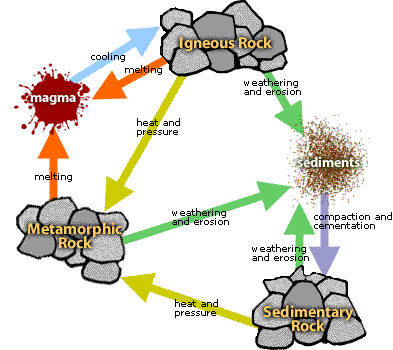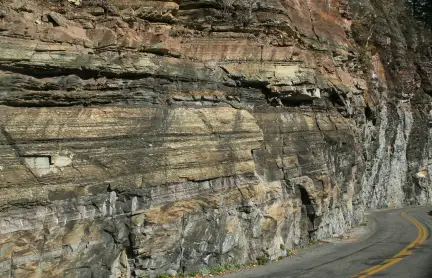HISTORY AND GEOLOGY
Several tribes of Native Americans were the first inhabitants in this area of the United States, known as the Ozarks, and geographically known as the Boston Mountain Range. The Osage Indians, a branch of the Sioux, were the main tribe and one of their larger villages is thought to have been to the east of the location where you are standing. Boone County, Arkansas was organized in 1869. The City of Harrison, which is the county seat, was platted and named after Colonel M. LaRue Harrison, a surveyor by trade and a Union Officer of the Civil War. The town of Harrison was incorporated on March 1, 1876. The Boone County Courthouse was built in 1907 by Charles L. Thompson. It is a historic courthouse, on the National History Registry and the setting is of an "old town square". It is Georgian Revival in style, with a hip roof above a course of dentil molding, and bands of cast stone that mark the floor levels of the building.

On the grounds of the Courthouse Square lawn, you will find excellent samples of all three types of rock - sedimentary, metamorphic and igneous. This location also has quartz crystals as a bonus for your viewing pleasure!! Each section has an explanation of the monument or what you are looking at, the type of rock used at each location and a few questions for you to answer. There are five stages (different locations) for you to view. Let's get started!
**Logging requirements**
DO NOT POST ANSWERS IN YOUR LOG.
Send the answers to questions to us via email.

Sedimentary Rock

Stage One: Sedimentary Rock
Jack Williams Memorial
N 36 13.838 W 093 06.452
This is a large sedimentary rock containing a plaque dedicated to Harrison's only Congressional Medal of Honor recipient, United States Navy Pharmacist Mate Third Class Jack Williams. It was placed here on June 29, 1983 by the Harrison Noon Lions Club. Due to this area's marine (water, not military) history, Arkansas has a lot of sedimentary rock formations. A sedimentary rock is made up of two parts: the particles and the binder that holds them together. Sedimentary rocks are geologically classified as clastic (rocks made up of grains of sand, silt, and clay) or chemical (rocks made up of shell fragments, saline water deposits, and other materials). The clastic sedimentary rocks are made up of shales, siltstones and sandstones. The chemical sedimentary rocks are limestone and dolostone.
1. What are the colors of the sedimentary rock of the Jack Williams Memorial?
2. How many layers can you count on the opposite side of the rock from the plaque?
3. Are the layers uniform in width?
Igneous Rock

Stage Two: Igneous Rock
Boone County War Memorial
N 36 13.829 W 093.06492
Granite is a light-colored igneous rock with grains large enough to be seen by the naked eye, (without any tools). It forms from the slow crystallization of magma below Earth’s surface. Granite is composed mainly of quartz and feldspar with minor amounts of mica, amphiboles and other minerals. This mineral composition usually gives granite a red, pink, gray or white color with dark mineral grains visible throughout the rock. Granite is the best-known igneous rock. Many people recognize granite because it is used to make many objects that we encounter in daily life. These include counter tops, floor tiles, paving stone, curbing, building veneer and monuments.
1. What colors do you see in the granite?
2. How many slabs of granite are at this location?
3. Is the texture smooth or rough?
4. Is there any difference between the front and the back of the granite?
Metamorphic Rock

Stage Three: Metamorphic Rock
West Doors of the Courthouse (handicap accessible during working hours)
N 36 13.821 W 093 06.491
The business hours are from 8:00 to 4:30, Monday through Friday. If you arrive during a weekday, you can go inside the building and view the extensive use of the marble in main center section of the building. If you arrive after hours or on a weekend, you can still see the marble used on the stairwells, best viewed from the east and west doors. The marble in the building has been here since the construction of the building in 1907. The inside stairwell on the west side of the building has been the stairwell used as the entrance to the courtroom that is on the top floor, so it's had thousands of people going up and down them for over 100 years!!! Marble is a rock resulting from metamorphism of sedimentary carbonate rock. Metamorphism causes changes in the original mineral grains. The resulting marble rock is typically composed of an interlocking different colors of carbonate crystals. Geologists use the term "marble" to refer to metamorphosed limestone. Marble is commonly used for sculpture and as a building material.
1. What color(s) is the marble used in the stairwells? If were able to go inside, what color is the marble at the base of the pillars? If you were not able to go inside, just let us know you arrived after hours.
2. Can you see thinning of the marble on the west inside stair treads on the west side of the building? (You can see this through the doors if you arrive after hours or on the weekend). Explain your answer.
Quartz Crystals

Stage Four: Crystals
Spanish American War Memorial
N 36 13.810 W 093 06.460
This crystal and concrete monument in memory of Spanish-American War veterans is one of the oldest monuments on the Boone County courthouse lawn. Quartz is the second-most-abundant mineral in Earth's crust. Ordinary yet extraordinary, colorful and clear, Quartz crystals comprise the largest and most diverse family in the mineral kingdom. Composed of silicon and oxygen (silicon dioxide), Quartz, from the European "quarz", is a key component in a wide array of minerals designated as "silicates." It occurs as prismatic hexagonal crystals in compact masses and druses, as well as in dense fibrous or grainy formations without visible crystals. It is also an important mineral element in common rock such as granite, quartzite and gneiss, and in sedimentary conglomerates like sandstone. Quartz crystals can be colorless, white, purple, pink, brown, black, gray, green, orange, yellow, blue, and red. Sometimes multicolored or banded.
1. What color(s) are the quartz crystals?
2. Do you see quartz crystals on the back side of this monument?
3. What color(s) is the rock that contains the crystals?
Back to Sedimentary Rock

Optional Stage Five: Sandstone
You are now standing on the east side of the courthouse. Go to the steps in front of the east doors. There are several large sandstone rocks. Sandstone is a clastic sedimentary rock. Like sand, sandstone may be any color, but the most common colors are: tan, brown, yellow, red, grey, pink, white, and black. Since sandstone beds often form highly visible cliffs and other topographic features, certain colors of sandstone have been strongly identified with certain regions.
1. How many large sandstone rocks are in the landscaping?
2. What colors do you see?
3. Do you see any layers in the rocks?
4. Touch the large rocks. Describe the texture that you feel.
Optional: If you would like you can post a photo of yourself and/or your group, please do so with the courthouse in the background. Please do not post spoiler photos.
Enjoy your stay and we wish you safe travels!! If you enjoyed this cache and your new smiley, please feel free to add to your favorites!!
CONGRATS TO 'MaxB on the River' for FTF!